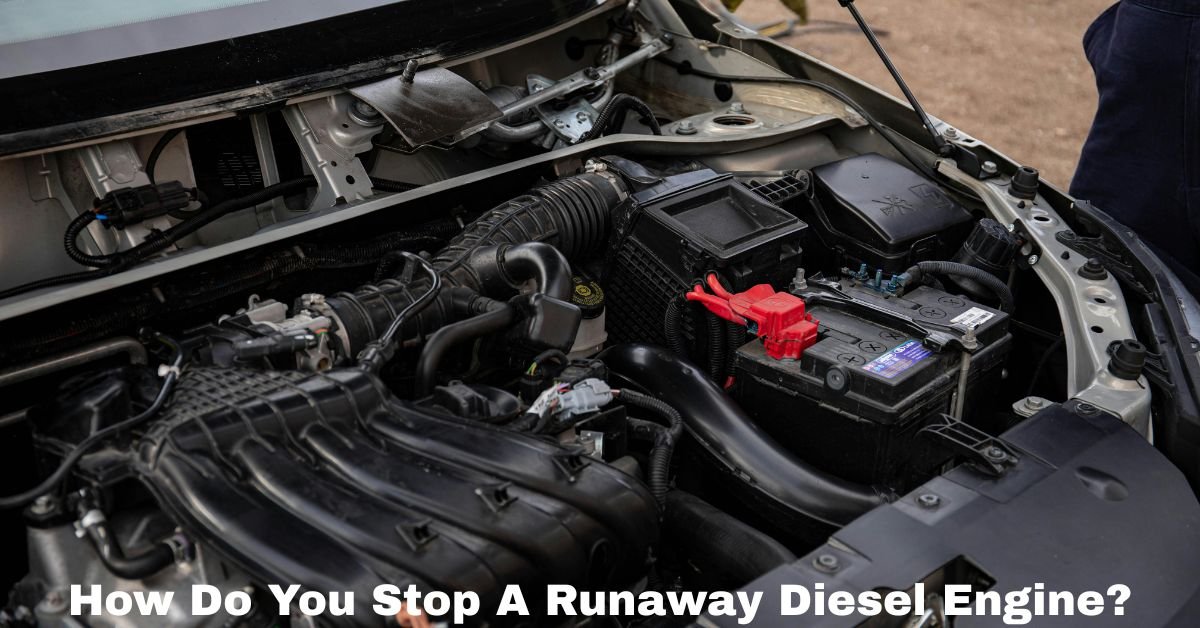One of the most shocking and hazardous mechanical failures one might see is a runaway diesel engine. It happens suddenly, often without warning, and if not handled correctly, it can lead to catastrophic damage — both to the engine and to anything or anyone nearby. Understanding what causes a diesel engine to “run away,” and how to stop it quickly and safely, is critical for anyone working around diesel-powered equipment.
How Do You Stop a Runaway Diesel Engine?
What Is a Runaway Diesel Engine?
A runaway diesel engine is a condition where the engine continues to run uncontrollably without the need for fuel from the injection system. Instead, it begins to consume an external fuel source — often engine oil mist, flammable vapors, or even its own lubricating oil — drawn into the combustion chamber through the intake.
Unlike gasoline engines, diesel engines don’t rely on spark plugs. They ignite fuel through compression. This means that any combustible vapor or mist entering the intake, under the right conditions, can keep the engine running — and accelerating — well beyond its design limits. When this happens, the throttle becomes useless, the ignition switch won’t shut it off, and the RPMs can skyrocket until the engine literally tears itself apart.
Common Causes of a Diesel Engine Runaway
Some typical causes include:
- Turbocharger failure: A damaged turbo can allow oil from the turbo bearings to enter the intake system.
- PCV system leaks or malfunctions: Positive crankcase ventilation systems can feed oil vapors back into the engine.
- Overfilled crankcase or worn engine seals: Excess oil can be pulled into the combustion chamber.
- External fuel vapors: Engines operating in environments with combustible fumes (e.g., refineries or chemical plants) can ingest vapors and run uncontrollably.
Warning Signs of a Runaway
A runaway diesel engine often presents the following symptoms:
- Engine RPM rising uncontrollably even when the throttle is released.
- Excessive black or white smoke from the exhaust.
- Loud, abnormal engine noise.
- Inability to shut down the engine using the key or kill switch.
At this point, immediate action is required to avoid disaster.
How to Stop a Runaway Diesel Engine
Stopping a runaway diesel engine is all about cutting off its air supply. Because it may be using its own oil or external vapors as fuel, simply shutting off the injectors or turning off the ignition won’t work. Here are the most common ways to shut it down:
Must Read: Why Does An Engine Make Sound After Accelerating?

1. Use an Emergency Air Intake Shutoff (Air Shutoff Valve)
Many industrial engines are equipped with an air shutoff valve — a butterfly valve installed in the intake manifold. When activated (manually or automatically), it slams shut, cutting off the air supply and choking the engine. The safest and most efficient method of stopping a runaway is this.
2. Block the Air Intake Manually
If an emergency shutoff isn’t available, the next best option is to block the air intake physically. This could be done using a piece of wood, metal, or even a heavy-duty rag — something that won’t get sucked in and damage the engine further.
Warning: This is extremely dangerous and should only be attempted if you are trained and wearing proper protective equipment. A running diesel engine can suck in objects — and even body parts — with deadly force.
3. Use a CO2 Fire Extinguisher
A CO2 fire extinguisher sprayed straight into the intake may, in severe circumstances, displace enough oxygen to cause the engine to stall. While this is not the most effective method and may not work on large engines, it can buy critical time in an emergency.
4. Stall the Engine (For Manual Transmissions Only)
If the engine is in a vehicle with a manual transmission, another option is to stall it by engaging a high gear and quickly letting off the clutch while applying the brakes. This physically forces the engine to stop. Again, this method is risky and should be done only if it can be done safely.
After the Engine Stops
Once the runaway is stopped:
- Do not restart the engine until it has been thoroughly inspected.
- Check for the source of the fuel — likely oil or vapor ingress.
- Drain any oil that may have accumulated in the intake or intercooler.
- Replace damaged components, such as turbo seals or gaskets.
- Investigate any warning signs that may have preceded the incident.
Conclusion
Runaway diesel engines are dangerous and can cause fatal accidents or massive equipment failure if not handled quickly and properly. Knowing how to recognize the signs and stop the engine safely is essential for operators, mechanics, and safety personnel. Prevention — through regular maintenance, inspections, and the use of shutoff valves — is just as important as knowing how to respond.
Your best defense? Stay alert, stay trained, and ensure all safety systems are in place before the worst can happen.
